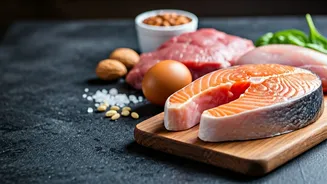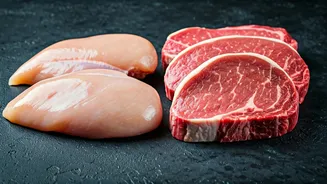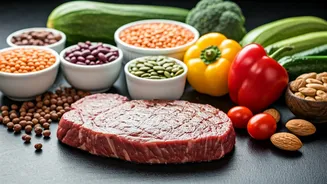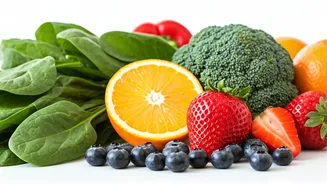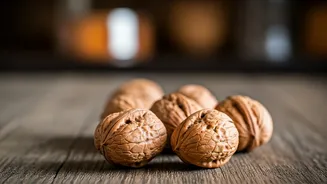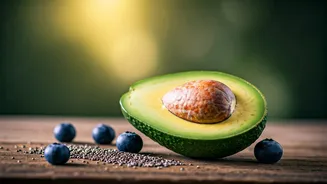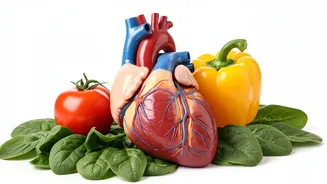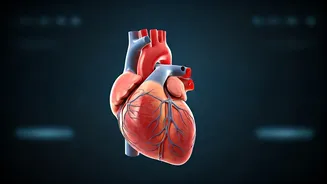Protein Powerhouses
Protein, the essential macronutrient, plays a crucial role in the development and repair of muscle tissue. The choice between lean and high-fat protein
sources is a fundamental decision for anyone focused on building or maintaining muscle mass. These options have distinct characteristics affecting how your body utilizes them. Lean proteins, characterized by their low-fat content, are often favored for their efficiency in providing pure protein with minimal additional calories. Conversely, high-fat protein sources can provide extra nutrients and contribute to satiety, but their higher caloric density must be carefully managed. Understanding the unique attributes of both categories is the key to creating a diet that effectively supports your specific fitness objectives. It is about understanding the different types of protein and how to best utilize them based on individual needs and goals.
Lean Protein Defined
Lean proteins are those with a minimal fat content, generally containing less than a few grams of fat per serving. Popular examples include skinless chicken breast, turkey, fish like cod and tuna, egg whites, and certain cuts of lean beef. These choices are celebrated for their high protein-to-calorie ratio, making them a great choice for individuals trying to minimize calorie intake while maximizing protein consumption. When selecting lean protein, it is also important to consider the processing and preparation methods, since the way these foods are cooked can influence their final nutritional profile. For instance, grilling, baking, or steaming are excellent ways to preserve the lean qualities of these protein sources. Focusing on lean protein allows the body to focus on muscle recovery and growth without excess dietary fat intake, which can be particularly advantageous during periods of active muscle building or fat loss. This approach aids in meeting the daily protein needs to encourage muscle protein synthesis efficiently.
Benefits of Leanness
Choosing lean protein offers several advantages for muscle development and overall health. Firstly, the reduced fat content assists in maintaining a lower calorie intake, which supports weight management, especially when combined with an exercise routine. Secondly, lean proteins are usually easy to digest, which makes the consumption of the food more convenient. This rapid digestion helps in efficient nutrient absorption, providing the body with the amino acids needed for muscle repair and growth without causing digestive discomfort. Thirdly, the focus on lean protein can reduce the intake of saturated fats, helping to promote cardiovascular health. This is particularly relevant for those mindful of their heart health or those at risk of cardiovascular ailments. Lean protein sources give a nutritional advantage, letting you concentrate on the growth of the muscles while also promoting overall health.
High-Fat Protein Options
In contrast to lean proteins, high-fat protein sources contain greater amounts of fat alongside protein. These include fatty cuts of meat such as ribeye, salmon, whole eggs, and certain dairy products like full-fat yogurt and cheese. The fats in these foods vary, including healthy monounsaturated and polyunsaturated fats, as well as saturated fats. Consuming these high-fat protein sources may contribute to a greater feeling of satiety due to the higher fat content, which can be useful in managing hunger and controlling overall food intake. However, one has to be mindful of the calorie density, as the added fat elevates the total calorie count per serving. The best approach is to carefully consider the balance between fat, protein, and carbohydrates to align with one’s specific dietary goals. The right integration of high-fat protein sources within a balanced diet can support both muscle growth and overall health.
Fat's Role Explained
Fat, when included in the diet, plays many essential roles, supporting hormone production, especially testosterone, which is vital for muscle growth. Certain fats, such as omega-3 fatty acids present in salmon, possess anti-inflammatory properties, assisting in recovery and reducing muscle soreness. However, it's vital to recognize the differences between fat types. Saturated fats, often found in higher amounts in some high-fat protein sources, should be monitored to avoid excessive consumption, which could negatively impact cardiovascular health. Conversely, unsaturated fats, especially those from plant-based sources or fatty fish, provide health benefits. When incorporating high-fat protein sources, consider the nutritional profile of the fat content, focusing on healthy fats. This approach balances the need for essential nutrients with the objectives of muscle development and general wellness. Smart choices about fats within a balanced diet are key to the best results.
Making the Right Choice
The decision to choose lean or high-fat protein comes down to personal goals, dietary preferences, and overall health. Individuals aiming to lose weight or decrease body fat may find lean proteins advantageous due to their lower calorie density. People looking to build muscle may find benefits in both types, leveraging the added calories and nutrients from high-fat options for intense training needs. It is often most effective to incorporate a variety of protein sources to obtain a broad spectrum of nutrients and amino acids. This could involve combining lean protein sources with strategic amounts of high-fat ones. Paying attention to how the body reacts to different sources helps in refining the diet. Tracking macronutrient intake, paying attention to energy levels, and monitoring body composition are useful strategies in this process. By doing so, individuals can optimize their dietary choices to better meet their fitness goals.
Optimizing Your Intake
The way you incorporate protein into your diet is just as important as the source itself. Timing protein intake around workouts, such as consuming protein-rich foods or a protein shake soon after exercising, helps in muscle repair and growth. Spreading protein intake evenly throughout the day can also optimize muscle protein synthesis. Combining protein with carbohydrates, particularly after workouts, can replenish glycogen stores, providing the body with energy to fuel recovery. Also, remember the importance of hydration. Water is essential for protein digestion, nutrient absorption, and optimal muscle function. Proper hydration and appropriate protein consumption are key components of an effective muscle-building strategy. Considering individual needs and circumstances and adapting your approach will yield better results. Staying flexible and learning from personal experiences helps develop a personalized approach.
